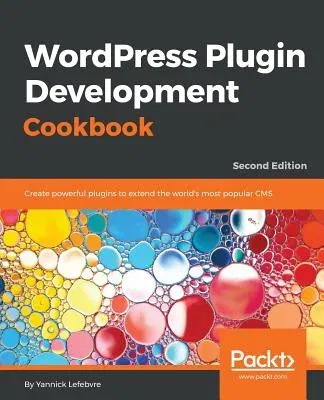Learn to create plugins for WordPress 4.x to deliver custom projects
or share with the community through detailed step-by-step recipes and
code examples
Key Features
- Learn how to change and extend WordPress to perform virtually any task
- Explore the plugin API through approachable examples and detailed
explanations
- Mold WordPress to your project's needs or transform it to benefit the
entire community
Book Description
WordPress is a popular, powerful, and open Content Management System.
Learning how to extend its capabilities allows you to unleash its full
potential, whether you're an administrator trying to find the right
extension, a developer with a great idea to enhance the platform for the
community, or a website developer working to fulfill a client's needs.
This book shows readers how to navigate WordPress' vast set of API
functions to create high-quality plugins with easy-to-configure
administration interfaces.
With new recipes and materials updated for the latest versions of
WordPress 4.x, this second edition teaches you how to create plugins of
varying complexity ranging from a few lines of code to complex
extensions that provide intricate new capabilities.
You'll start by using the basic mechanisms provided in WordPress to
create plugins and execute custom user code. You will then see how to
design administration panels, enhance the post editor with custom
fields, store custom data, and modify site behavior based on the value
of custom fields. You'll safely incorporate dynamic elements on web
pages using scripting languages, and build new widgets that users will
be able to add to WordPress sidebars and widget areas.
By the end of this book, you will be able to create WordPress plugins to
perform any task you can imagine.
What you will learn
- Discover how to register user callbacks with WordPress, forming the
basis of plugin creation
- Explore the creation of administration pages and adding new content
management sections through custom post types and custom database
tables.
- Improve your plugins by customizing the post and page editors,
categories and user profiles, and creating visitor-facing forms
- Make your pages dynamic using Javascript, AJAX and adding new widgets
to the platform.
- Learn how to add support for plugin translation and distribute your
work to the WordPress community.


